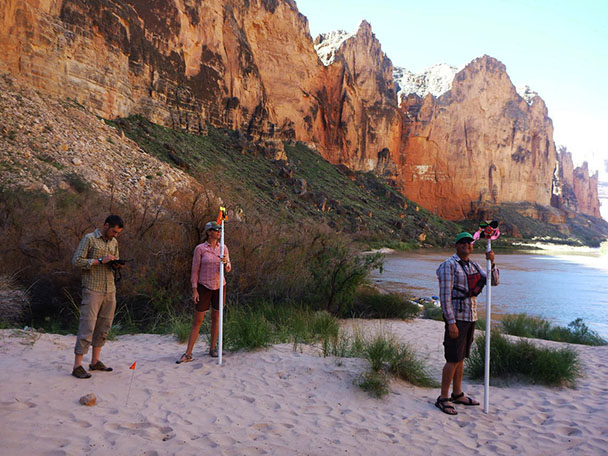Key Concepts
The result of processes that entrain and transport earth materials along coastlines, in streams, and on hillslopes. Wind and water are common agents through which forces are applied to resistant rocks, soils, or other unconsolidated materials. Erosion types often are designated on the basis of the agent: wind erosion, fluvial erosion, and glacial erosion. Fluvial erosion usually has been regarded as the most effective type in shaping the land surface during recent geologic time (see illustration). Under certain environmental conditions, however, wind erosion moves considerable quantities of earth materials, as demonstrated during the “dust bowl” years in the United States. Glacial erosion shaped much of the land surface during the Quaternary Period of geologic time. Each type of erosion produces distinctive landforms, contributing to the diversity of terrestrial landscapes. See also: Eolian landforms; Geomorphology; Glaciology; Mass wasting; Quaternary; Stream transport and deposition

Many terms are used in association with erosion processes, although not with consistency. Erosion involves the entrainment and transportation of earth materials from source areas to deposition sites. Soil loss refers to material actually transported from a particular hillslope or field, and may be less in volume than erosion due to on-site deposition in micro-topographic depressions. Sediment is the product of erosion, and sediment yield is the amount of sediment transported from a watershed. Other terms are found in the literature that differ somewhat in connotation within particular contexts and for particular scientific disciplines. See also: Sedimentology
Erosion includes various processes, depending upon perspective, ranging from in-situ rock weathering, mass-movement, sheetwash on hillslopes, channel bed and bank scour, work of fauna, and deposition. Most scientists regard weathering, mass-movement, and deposition as separate processes and faunal erosion to be of minor importance except in special circumstances. See also: Weathering processes
Forces exerted by erosion processes must exceed resistances of earth materials for entrainment and transportation to occur. Environmental conditions determine the magnitude of the forces, the resistances, and the relations among them. Erosion rates are highly variable in time and space due to changing relations between forces and resistances. The major factors governing wind-erosion rates are wind velocity, topography, surface roughness, soil properties and soil moisture, vegetation cover, and land use. The major factors governing fluvial-erosion rates on hillslopes are rainfall energy, topography, soil properties, vegetation cover, and land use. The major factors governing fluvial-erosion rates in stream channels are depth and velocity of water flow, together with the size and cohesiveness of the bed and bank materials. The major factors governing glacial-erosion rates are the depth and velocity of ice flow, together with the hardness of the bed and side-wall materials.
The erosion rate under natural, undisturbed conditions is known as geologic, normal, or natural erosion. The erosion rate following land disturbance, usually due to human activities such as agriculture, mining, or construction, is known as accelerated or anthropic erosion. Human activities are capable of changing erosion rates by two or three orders of magnitude. Conversely, soil-conservation practices can reduce erosion rates to approximate the natural rate if the properly designed, applied, and maintained. Effective erosion control is based upon either decreases in forces impinging on surfaces or increases in the resistances of surface materials. See also: Soil conservation
Accelerated erosion by fluvial processes may be the most important environmental problem worldwide because of its spatial and temporal ubiquity. Erosion rates commonly exceed soil-formation rates, causing depletion of soil resources. The effects of erosion are insidious due to the removal of the fertile topsoil horizon, compromising food production. Sediment frequently is transported well beyond the source area to degrade water quality in streams and lakes, harm aquatic life, reduce the water-storage capacity of reservoirs, and increase channel-maintenance costs. See also: Soil





